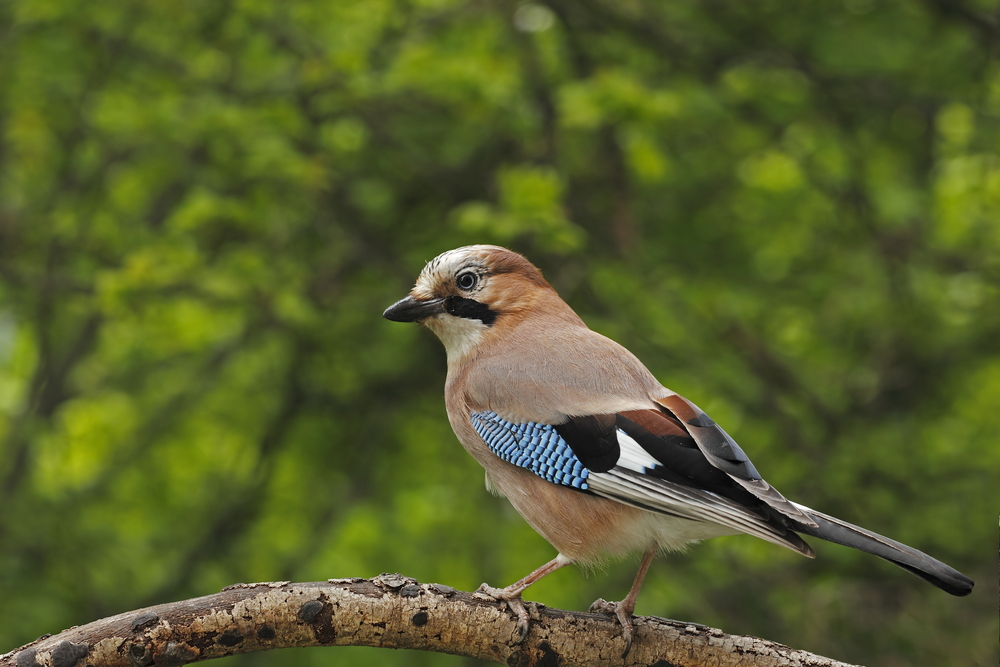
Imagine a future where colourants were nearly fade-resistant, on top of being far more sustainable and environmentally friendly. In this scenario a coat of paint could last a lifetime and red sweaters would never dye socks and undies pink. Well thanks to University of Sheffield researchers, an X-ray scattering machine at the ESRF facility in France, Dulux paints, London’s Natural History Museum, and most importantly the Eurasian jay, the key to this future—developing everlasting colour—may soon be revealed.
Using jay feathers supplied by the Museum, Dr. Andrew Parnell from Sheffield’s Physics department, alongside Dr. Adam Washington and a team from the University’s AkzoNobel Decorative Paints Material Science Research Team, set out to make a better white paint—a product with a lower carbon-footprint that stays crisp and bright longer.
While most industries use colourants like dyes and pigments that fade over time, for a while now researchers have known that some animals, like jays, don’t bother with these short-lived materials. But just how the birds were able to create their massive and fine tuned range of colours remained a mystery, one the team hoped to solve.
Bird feeder in the mountains – Krmítko v horách – 31.1.2014 from Lubo Ondrasko on Vimeo.
Using X-ray scattering, a process Parnell equates to how a CD or DVD is read, where a laser beam hits the device and bounces back its pattern to a player, the team explored the colour blueprint of an individual jay feather, publishing their work in Scientific Reports late last month.
‘The X-ray beam can probe into the patterns within the feather,’ says Parnell. ‘First we mapped the jay feather and then a single barb, much like a single human hair, revealing that the nanostructure, the arrangement of tiny holes within the spongy-matrix of the barb, determines the light, and hence colour, reflected.’
Using this method, a single feather can hold a multitude of colours along its length, allowing the elaborate patterns’ characteristic of many species’ plumage. And unlike conventional dyes and pigments, the bird’s colours are forever, written into the feather’s makeup by their genes.
Parnell says many other species likely use the same method as jays do to make themselves colourful, from other birds to reptiles and amphibians, but the process does have limits. For a long time researchers have wondered why wild critters generally can’t make the colour green, a big curiosity given how crucial the colour is for camouflage. Parnell explains that green falls within such a narrow range of light it’s too complex for even their newfound tuneable system to capture. Instead, he explains, animals create green by applying yellow pigment over blue structures.
The team plans to use their findings to formulate the next-generation line of eco-friendly paints with similarly structured synthetics, hoping to replace the need for environmentally damaging chemicals like titanium dioxide, the currently favoured ‘white’ pigment of choice, and to reduce reapplication and replacement waste. Parnell says it’s no big surprise that the potential answer to their problem already existed in nature, but adds that doesn’t make the solution any less impressive.
‘What we found was more complex than we anticipated,’ says Parnell. ‘The system is incredibly elegant. It’s amazing how intricate such a simple process can be.’
More birds on Love Nature:
Africa’s vultures are circling towards extinction, a new study warns
The bigger and more urban the bird, the more human-tolerant it’s likely to be
